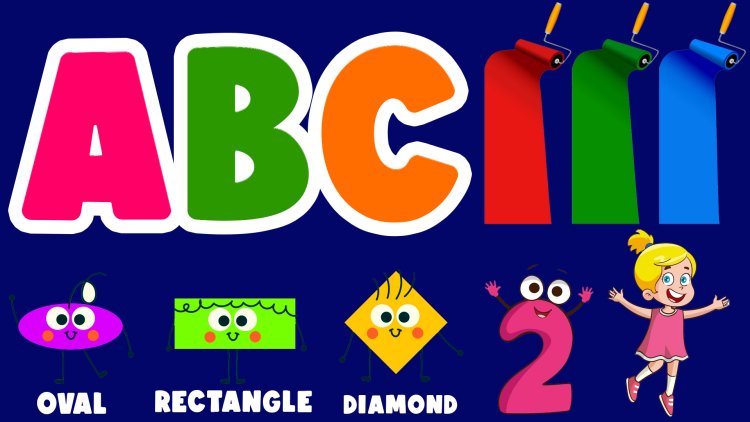Empowering Kids Through Learning: A Guide to Nurturing Young Minds
Learning is one of the most powerful tools we can give our children, shaping their future and empowering them to navigate the world with curiosity and confidence. The way kids learn has changed dramatically over the years, as we better understand their cognitive, emotional, and social development

Learning is one of the most powerful tools we can give our children, shaping their future and empowering them to navigate the world with curiosity and confidence. The way kids learn has changed dramatically over the years, as we better understand their cognitive, emotional, and social development. As a result, effective strategies and tools are continuously being developed to make learning both enjoyable and impactful. This article explores how children learn best and offers insights on fostering a positive and enriching learning environment.
The Importance of Early Learning
The early years of a child’s life are critical for brain development, with studies showing that the first five years are particularly influential. This period is a time when a child’s brain forms connections at a rapid rate, and their experiences help shape their understanding of the world. Research highlights that children’s learning abilities are not only based on what they are taught but also on how they are taught, and the environment in which they learn.
Incorporating learning into daily life, even through simple interactions, is key to nurturing curiosity and a love of learning. Children’s minds are like sponges, soaking up everything around them, and the more enriching and positive the environment, the better their cognitive and emotional development.
Understanding How Kids Learn
Children’s learning styles and needs vary widely, but there are general principles that apply across the board. Recognizing how children process information is essential in guiding their educational journey.
-
Active Learning
Kids learn best when they are actively engaged in the learning process. Hands-on activities, experiments, and play-based learning allow children to explore new concepts in a way that is both fun and effective. Instead of passively receiving information, kids who are allowed to experiment and discover through trial and error develop critical thinking skills and independence. -
Learning Through Play
Play is one of the most important methods of learning for young children. It offers them a chance to explore new ideas, engage with others, and develop important social and emotional skills. Whether it’s pretending to be a teacher, building a fort, or playing with puzzles, play helps children process and retain information in a meaningful way. -
Social Interaction
Children are highly social beings, and learning from peers, teachers, and family members is crucial. Collaborative activities such as group discussions, cooperative games, and project work teach kids how to share ideas, work as a team, and solve problems together. Through social interaction, they also gain a sense of belonging and confidence in their abilities. -
Repetition and Consistency
Repetition is key to helping children master new concepts. When a child is exposed to the same material repeatedly in different contexts, it helps to reinforce their understanding and memory. Creating a consistent learning routine helps children feel secure and ready to tackle new challenges each day. -
Visual and Sensory Learning
Many children are visual or sensory learners, meaning they respond well to stimuli like pictures, colors, sounds, and textures. Learning activities that incorporate these sensory elements—such as using flashcards, drawing diagrams, or engaging in sensory bins—can enhance children’s understanding and recall of new information.
The Role of Parents and Educators in Kids’ Learning
Parents and educators play a significant role in creating an environment where children feel safe, supported, and motivated to learn. By establishing routines, offering encouragement, and providing resources, adults can foster a love of learning that lasts a lifetime.
-
Creating a Positive Learning Environment
A positive environment is one where children feel valued and respected. A clutter-free space with plenty of light, access to books and learning tools, and an atmosphere of encouragement can inspire children to explore their interests. It’s important to praise effort rather than just achievement, as this helps children build resilience and a growth mindset. -
Encouraging Curiosity
Kids are naturally curious and tend to ask a lot of questions. Rather than just giving answers, parents and educators should take the opportunity to engage kids with open-ended questions and discussions. This helps children develop problem-solving skills and learn to think critically about the world around them. -
Setting Realistic Expectations
Every child learns at their own pace, so it’s important to set realistic, age-appropriate expectations. Pushing a child too hard can lead to frustration and burnout, while setting goals that are too easy may not offer enough challenges. Striking a balance between encouragement and challenge is essential to keeping kids engaged and motivated. -
Modeling Lifelong Learning
Children learn by example, so when they see the adults around them actively engaging in learning—whether it’s reading a book, solving a problem, or learning a new skill—they are more likely to value education and pursue their learning opportunities.
Fun and Effective Learning Activities for Kids
Here are some fun and simple activities that can make learning more engaging for children:
-
Arts and Crafts
Creative activities help develop fine motor skills, foster imagination and allow for self-expression. Drawing, painting, cutting, and gluing also introduce concepts like shapes, colors, and patterns. -
Storytelling and Reading Together
Reading books with children builds vocabulary, comprehension skills, and emotional intelligence. After reading, ask questions about the story, characters, and lessons to encourage critical thinking. -
Outdoor Exploration
Nature provides endless learning opportunities. Whether it’s observing insects, identifying plants, or measuring the weather, outdoor exploration promotes hands-on learning and introduces science in a fun, interactive way. -
Games and Puzzles
Board games, card games, and puzzles enhance problem-solving abilities, teach kids to take turns, and provide a fun way to learn math, strategy, and language skills. -
Cooking and Baking
Involving kids in cooking helps them practice math (measuring ingredients), following directions, and developing fine motor skills (mixing, stirring). Plus, it’s a fun way to introduce nutrition and the science of cooking.
The Digital Age and Kids’ Learning
Technology, when used properly, can enhance children’s learning experiences. Educational apps, websites, and online games are valuable tools that can supplement traditional learning. However, it’s essential to strike a balance between screen time and other forms of learning, such as outdoor play and face-to-face interactions.
Interactive learning tools can be highly engaging and cater to different learning styles. For instance, apps like Khan Academy Kids, ABCmouse, or Duolingo can be fun ways for kids to learn new subjects and practice key skills like math, reading, and language.
Conclusion
The path to lifelong learning begins in childhood, and the way we approach kids' education can make all the difference. By understanding how children learn and creating an environment that fosters curiosity, creativity, and critical thinking, we can nurture their love of learning. Whether through play, exploration, or engaging with technology, there are countless ways to make learning a fun and rewarding journey for every child. As parents, caregivers, and educators, we have the incredible opportunity to guide young minds toward a future of endless possibilities.
What's Your Reaction?
















.jpg)


